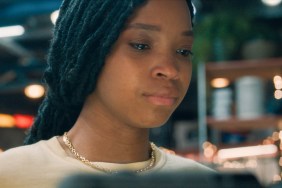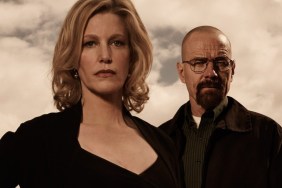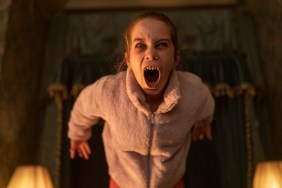There have been stranger comeback stories than the one of director Craig Gillespie, but it’s hard to believe that there’s ever been one that’s happened nearly as quickly. Even as his first movie, the broad comedy Mr. Woodcock was being attacked by critics across the nation, his second movie Lars and the Real Girl was getting rave reviews from the Toronto International Film Festival.
Starring Ryan Gosling in the title role, “Lars” is a poignant and subdued comedy about a lonely man whose new girlfriend is a life-like sex doll he names “Bianca,” getting his already concerned brother and sister-in-law (Paul Schneider, Emily Mortimer) even more worried about Lars’ mental health. It’s the impetus for some big laughs, but more surprisingly, their small town community immediately takes to Bianca and soon, they love her nearly as much as Lars does.
ComingSoon.net sat down with Gillespie to talk about the movie and how it came out so soon after his first movie.
ComingSoon.net: You have an interesting accent. Where are you from originally?
Craig Gillespie: I’m from Australia. I moved to New York when I was nineteen and went to school here and thirteen years in New York and you get (a) Boston (accent) (laughs). It’s kind of a mess
and now I’m in L.A.
CS: It’s going to evolve even more.
Gillespie: Unfortunately.
CS: Well, it’s good to have if Australian directors ever become really hot…
Gillespie: I’m not that adept.
CS: I know you had a background in commercials and that you made “Mr. Woodcock” some time ago, so when did you finish that movie and start “Lars and the Real Girl”?
Gillespie: I did “Woodcock” first and then about three weeks after I’d wrapped principal photography on “Woodcock,” people were asking what I was going to do next and I said “Lars and the Real Girl” like it was happening, which of course it was nowhere close to happening. I had the script for four years, and literally three or four weeks after “Woodcock” I got it set up. It happened very quickly.
CS: When was that?
Gillespie: It was probably about a year and a half ago or so.
CS: And then you got Ryan on board?
Gillespie: Ryan was all the same week. They were simultaneously and separate from each other.
CS: Then that would be around spring 2006?
Gillespie: No, it was actually the fall of the year before.
CS: You were already done shooting “Woodcock” back then?
Gillespie: Yeah, there were reshoots that happened in the spring, like April or something of last year, and this had to get pushed because I wanted it to be in the winter time, so we didn’t shoot this until the end of last year.

CS: Why was “Mr. Woodcock” delayed so much that the two movies are being released a month apart?
Gillespie: Did you see the L.A. Times article that came out last week? It’ll give you all your answers. Yeah, it’s quite thorough. (That article can be read here.)
CS: How did you first find Nancy Oliver’s script? You had been directing commercials for a while and you hadn’t shot “Mr. Woodcock” at that time, I suspect.
Gillespie: In fact, I wasn’t even attached to “Mr. Woodcock” at the time. I was attached to several larger broad comedies, which is about all you can attract as a commercial director of comedy. There’s not really much genre to be had in commercials itself. You get a lot of broad comedies. I had a lot of stuff that I was juggling. John Cameron called me up who was the producer on this. He’d gotten the script and he worked with the Coen brothers for twelve years. He’d done “Rushmore” as well, “Bad Santa,” “Friday Night Lights.” He has an incredible track record, but I’ve known him socially for about five years but he’d never talked to me professionally. And out of the blue, he called me about this script and says it’s about this guy that falls in love with a sex doll. I was on set at the time doing a commercial and I almost said, “You know what? Don’t worry about it.” It seemed like such an absurd notion. I couldn’t imagine it sustaining ninety minutes. I was trying to be polite, so he sent it over and then after several weeks, my wife had picked it up. She had hated everything that I was looking at the time. She’s an avid reader and very honest. She said, “Have you read this? This is the kind of movie you should make.” And I said, “Really?” I read it and it’s an amazing script. It’s so tight. It’s so well crafted with the characters and all the journeys. It made my life quite easy.
CS: It’s funny because I’m sure when you first heard the premise, as most people do, they think it’s a broad comedy, but the humor is very subtle and subdued. Did Nancy include a lot of stage directions in the script?
Gillespie: No, there’s no stage directions. (laughs) The scenes are set up. What’s so great about her writing is that it leaves a lot to interpretation. They’ll be having dinner or they’ll sitting on the sofa, but you have to figure out the blocking and how you want to portray that. There’s obviously humor in the choices of the framing and you have to make those choices, but for me, the first choice was just putting Ryan in the film set the tone of the movie, because I knew he was going to take this to an emotional place that wasn’t on the page. That was much more interesting to me. That we could really dig into this character and go on this journey. The humor was a nice by-product. I felt like it was going to be there, it’s going to be inherent. I didn’t know how much, but it’s not really my concern. I think it’s more important that we make this a plausible, believable journey.
CS: Were all of your commercials very comedic or comedy based as well?
Gillespie: Yeah, everything is comedy. I’ve been doing comedy for twelve years. Which got me to be able to hone the tone and deal with that on a more subtle level.
CS: I haven’t seen “Mr. Woodcock,” but I’m just assuming that’s a little broader than this?
Gillespie: It is and you’ll discover that I didn’t do the reshoots. (laughs)

CS: Once you got the script, was there a lot of development as far as working with Nancy? Did the script evolve a lot over the years?
Gillespie: There was no development. I called her a lot to discuss the movie and emotionally what was going on with Lars and what he was feeling. There were a lot of choices that had to be made. She has the blanket at the beginning of the film, but it’s not mentioned again, so we had to make those choices on how does he wear it? Is he wearing it? When does he put it on Bianca? You know, we decided to keep it throughout the film, so she left us a lot of room to really create as well, which was great. There’s so many questions you can ask about what this character is going through and how aware is he of the delusion and all those things. A lot of those questions that ultimately I had to start figuring out myself. There’s the question of the town and ultimately their acceptance and going along with it. It seems maybe obvious now, but at the time I thought, “Do they believe? Are they going along with Bianca?” What I realized is that they’re just doing it for Lars. They’re just doing it for their love of Lars. And once I got that handle on it, everything else was motivated through that aspect.
CS: Who got to cast Bianca? What kind of description of the sex doll did Nancy include in her script?
Gillespie: I called her up and was like, “So she’s half Brazilian and half Danish? So what is that?” Ultimately, it seemed to give me the luxury that she could be anything with that combination. It’s funny. I took it upon myself to cast her and I actually went to factory three times in San Diego, the sex doll factory. Endless choices, it gets quite overwhelming. I was trying to figure it out, because there’s ten bodies and fifteen faces and five skin colors and all the different colors of eyes. The math gets exorbitant. It was a little overwhelming of where to even start, and then I found this book called “Still Lovers.” It was about men who had ordered these dolls, and there were these beautifully poignant, tragic photographs of them with their dolls that I thought were very respectful of the subject matter, and much more about the relationship aspect of it than the physical aspect of it. There was this one doll with this incredibly tranquil, peaceful face and she captured the spirit that I was looking for, so I went to the factory and said, “This is the doll that I want.” They said, “That’s an older model. We don’t really use her anymore.” Her eyes were half-masked which was what I liked about her and they were getting complaints, because she looked bored and not really into it.
CS: I understand that Bianca actually got treated as if she were a real actress with her own trailer.
Gillespie: Truly, it was necessary. As I said to Ryan, I was going to treat her like an actress. She had a nudity clause, so there’s even a bathtub scene where I don’t show anything of Bianca, maybe a little bit of her rear end, but it’s tastefully done. In fact, she had her own space to get changed off the set and she’d never get changed in front of anybody and she would only be on the set if she was in the scene. We wouldn’t leave her sitting around, and she would be behind camera for Ryan if he was performing. And Ryan, being so motivated and in the character, sort of commanded that too on set. I think the way the set dealt with it is the way the talent dealt with it. It really permeated that way.
CS: There’s actually a scene between Gus and Bianca where it’s hinted that there might be something unseemly going on there between them.
Gillespie: I think that’s your own projection there. (laughs) I think that’s more about you, than Gus.

CS: You mentioned before about your worry of the film not sustaining ninety minutes, the danger of it turning into “Weekend at Bernie’s”…
Gillespie: I wouldn’t even mention those two (movies) in the same sentence. (laughs)
CS: Oh, really? I was hoping to claim the advertising quote “Like ‘Weekend at Bernie’s,’ if it were funny”. But seriously, there is the danger of taking that idea though and keeping it going for ninety minutes.
Gillespie: But we don’t really take that idea. We take this idea of community and acceptance, and of a coming of age story, and that’s ninety minutes. The part about Bianca is really fifteen minutes, and then you realize that she’s much more a conduit for people to deal with Lars and that’s where you can really dig into the characters and what’s going on.
CS: When I saw this in Toronto, it was one of the underdogs that took many people by surprise.
Gillespie: You mean we’re not doing a good job with the advertising?
CS: Toronto’s more about word-of-mouth than advertising, but obviously, everyone was interested because of Ryan and Nancy’s script and everyone assumed it was your first movie. Was that an interesting experience?
Gillespie: I like being the underdog. (laughs) It’s better to have low expectations. I feel like we’re still the underdog. I think we’re hopefully starting to get on people’s radar, but I think it’s going to be a more word-of-mouth situation.
CS: As far as upcoming movies, what’s “The Whole Pemberton Thing”?
Gillespie: It’s something that I was attached to years ago that I kind of got over.
CS: As far as doing indie versus studio movies, do you want to keep doing things like this?
Gillespie: Basically, the freedom to be able to explore characters and work with actors and create something that’s truly unique that I had on this last movie, that’s what I’m trying to do every time now. It’s probably going to lean more towards the independent world in that sense. I don’t know what kind of film it’s going to be, but it’s really about being able to explore that.
CS: So will you put “Mr. Woodcock” on your reel, or would you try to pretend it never happened and just include “Lars and the Real Girl”?
Gillespie: I have no regrets with “Mr. Woodcock” and I would not be where I am right now if not for the lessons I learned from that. It certainly informed me and my whole approach for how I work.
Lars and the Real Girl opens in select cities on Friday, October 12. Gillespie’s other movie Mr. Woodcock is still playing in theatres as well.









